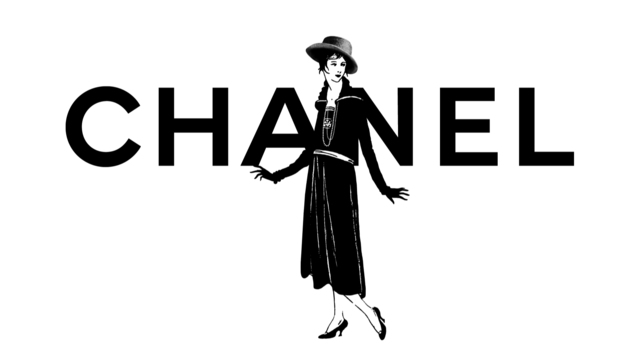Chanel is a French luxury fashion and beauty brand that was founded in 1909 by Gabrielle “Coco” Chanel. The company initially began as a millinery shop in Paris, but eventually expanded into clothing, accessories, and fragrances. Today, Chanel is one of the world’s most recognized and influential fashion brands, with a reputation for timeless elegance and sophistication.
Chanel’s early designs were characterized by simple, comfortable clothes that were made from high-quality fabrics and emphasized ease of movement. This approach was a departure from the restrictive, heavily structured clothing that was popular at the time, and it quickly caught on with women who were looking for more freedom in their fashion choices.
Over the years, Chanel has become famous for a number of iconic designs, including the little black dress, the quilted handbag with chain straps, and the two-tone slingback shoe. These designs are still popular today and are considered staples of the modern fashion wardrobe.
In addition to clothing and accessories, Chanel has also become known for its fragrances. The company’s first perfume, Chanel No. 5, was introduced in 1921 and quickly became a sensation. Today, Chanel offers a wide range of fragrances for both men and women, including the classic Chanel No. 5 as well as newer scents like Chance and Coco Mademoiselle.
Under the leadership of Karl Lagerfeld, who served as creative director from 1983 until his death in 2019, Chanel continued to innovate and expand its offerings. Lagerfeld was known for his bold, avant-garde designs, and he helped to keep the brand fresh and relevant in the ever-changing world of fashion.
Today, Chanel is still run by the Wertheimer family, who have owned the company since the 1950s. The brand remains a symbol of luxury, style, and timeless elegance, and it continues to inspire and influence designers around the world.
History of Chanel
Chanel was founded by Gabrielle “Coco” Chanel in 1909 in Paris, France. Chanel was born in Saumur, France in 1883 and grew up in a convent orphanage after her mother’s death. She learned to sew and became a seamstress, and later worked as a cabaret singer before opening her first millinery shop, which specialized in hats.
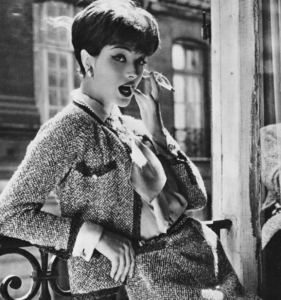
Chanel’s early designs were influenced by her experiences in the convent, where she wore simple, uniform-like clothing. She also drew inspiration from men’s clothing, which she believed was more comfortable and practical than women’s clothing at the time.
In 1913, Chanel opened her first clothing boutique in Deauville, a seaside resort town in northern France. The boutique was an instant success, and Chanel quickly gained a reputation for her simple, elegant designs that emphasized comfort and ease of movement.
During World War I, Chanel’s business suffered as many of her clients were unable to afford luxury clothing. However, she continued to design and innovate, introducing new styles and materials such as jersey, a fabric typically used for men’s underwear. This fabric was lightweight and easy to wear, and it became a hallmark of Chanel’s designs.
In the 1920s, Chanel became even more successful, with boutiques in Paris, Biarritz, and Cannes. She introduced the now-iconic “little black dress” in 1926, which was a departure from the heavily embellished clothing that was popular at the time. Chanel also designed costume jewelry, which was inspired by the simple, geometric shapes of modern art.
Chanel’s success continued through the 1930s, despite the economic difficulties of the Great Depression. She introduced the Chanel suit, which was a tailored jacket and skirt made from tweed, a rough woolen fabric. The suit was practical and elegant, and it quickly became a staple of the modern woman’s wardrobe.
During World War II, Chanel closed her boutiques and moved to Switzerland, where she lived with a Nazi officer. After the war, she faced accusations of collaboration with the Nazis, which damaged her reputation. However, she was never officially charged or convicted of any crime.
In the 1950s, Chanel returned to Paris and reopened her couture house. She introduced the 2.55 handbag, which had a chain strap that allowed women to carry it over their shoulder, leaving their hands free. The bag was a hit, and it remains a classic Chanel design to this day.
Chanel continued to innovate and expand her brand until her death in 1971. Today, Chanel remains one of the world’s most recognized and influential fashion brands, with a legacy that is rooted in the innovative and groundbreaking designs of its founder, Gabrielle “Coco” Chanel.
Business Segments of Chanel
Chanel is a luxury fashion and beauty brand that operates in several different business segments. These segments include:
Fashion: Chanel is best known for its fashion lines, which include haute couture, ready-to-wear, and accessories. The brand’s fashion collections are designed by a team of in-house designers and are shown twice a year during Paris Fashion Week. The collections feature classic designs with a modern twist, and are known for their high-quality fabrics and attention to detail.
Beauty: Chanel also has a successful beauty business, which includes skincare, makeup, and fragrance products. The brand’s skincare line includes products for cleansing, toning, and moisturizing, as well as specialized treatments for specific skin concerns. Chanel’s makeup line includes products for the face, eyes, and lips, and is known for its high-quality formulas and elegant packaging. The brand’s fragrance business includes classic scents like CHANEL N°5, as well as newer fragrances like Coco Mademoiselle and Bleu de Chanel.
Watches: Chanel also has a line of luxury watches, which are designed and manufactured in Switzerland. The brand’s watch collection includes both men’s and women’s styles, and features a range of materials, from stainless steel to fine jewelry.
Fine Jewelry: Chanel also has a line of fine jewelry, which includes engagement rings, necklaces, bracelets, and earrings. The brand’s jewelry is known for its elegant designs and high-quality materials, which include diamonds, pearls, and precious metals.
Eyewear: Chanel’s eyewear business includes sunglasses and eyeglasses, which are designed and manufactured in Italy. The brand’s eyewear collections feature classic styles with modern touches, and are known for their high-quality materials and attention to detail.
Overall, Chanel’s business segments all share a focus on quality, elegance, and timeless design. The brand’s products are sold in boutiques around the world, as well as through department stores and online retailers.
Some Chanel iconic Products
Chanel is known for many iconic products that have become synonymous with the brand’s timeless elegance and sophistication. Here are some of the most iconic Chanel products and their features:
CHANEL N°5 perfume – This iconic fragrance was created by Coco Chanel herself in 1921, and it remains one of the most famous perfumes in the world. The scent is a combination of floral and woody notes, with jasmine, rose, and ylang-ylang at its heart. The sleek, minimalist bottle is also instantly recognizable, with its simple lines and elegant logo.
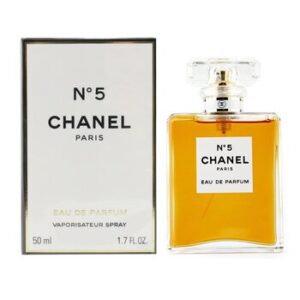
Chanel 2.55 handbag – The 2.55 is one of the most famous handbags in the world, and it was also designed by Coco Chanel. The bag features a quilted leather exterior, a chain strap, and the signature double C logo. It was designed to be both elegant and practical, with a spacious interior and a front flap that could be easily opened with one hand.
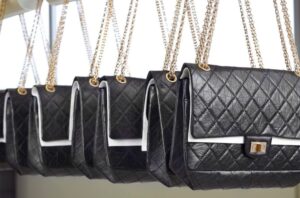
Chanel tweed jacket – The tweed jacket is another iconic Chanel product that has been popular for decades. The jacket is made from a textured tweed fabric that was originally used for men’s hunting jackets. Chanel adapted the fabric to create a feminine, elegant jacket that could be worn with skirts or pants. The jacket is often paired with a simple white blouse and pearls for a classic Chanel look.
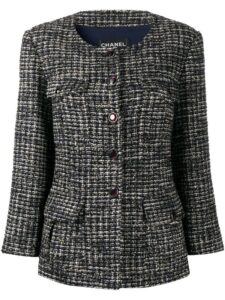
Chanel ballet flats – The Chanel ballet flats are another classic product that have become a signature of the brand. The shoes feature a simple, round toe and a flat heel, with the signature double C logo on the toe. The flats are available in a range of colors and materials, from classic black leather to bright tweeds and pastel suedes.
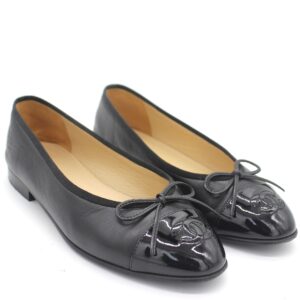
Chanel Rouge Allure lipstick – This luxurious lipstick is another iconic Chanel product that has become a favorite of many beauty enthusiasts. The lipstick features a creamy, hydrating formula that is long-lasting and comfortable to wear. The sleek, black and gold packaging is also instantly recognizable, with the Chanel logo on the cap.
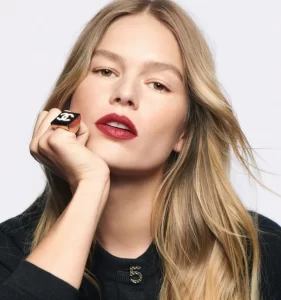
Overall, these iconic Chanel products all share a common thread of timeless elegance, quality craftsmanship, and sophistication. They are designed to be both beautiful and practical, and they have become symbols of the brand’s legacy of innovation and style.
What makes Chanel so prominent in luxury segment? – Success Factors of Chanel
Chanel is widely recognized as one of the most successful and prominent luxury brands in the world. There are several factors that have contributed to Chanel’s success and prominence, including:
Innovative and timeless designs: Chanel is known for its innovative and timeless designs, which have set the standard for luxury fashion and accessories. The brand’s founder, Gabrielle “Coco” Chanel, was a visionary designer who pioneered new styles and materials, such as the little black dress, the Chanel suit, and jersey fabric. Chanel’s designs continue to be relevant and influential today, and the brand has a reputation for creating classic pieces that can be worn for years to come.
High-quality materials and craftsmanship: Chanel is also known for its use of high-quality materials and craftsmanship. The brand’s products are made from the finest fabrics, leather, and metals, and are crafted with great attention to detail. Chanel’s haute couture pieces are made by hand and can take hundreds of hours to create, while the brand’s ready-to-wear collections are still crafted with the same care and attention to detail.
Brand heritage and identity: Chanel has a strong brand heritage and identity that has been carefully cultivated over the years. The brand is associated with elegance, sophistication, and luxury, and is recognized around the world for its iconic designs and timeless style. Chanel has also been able to successfully evolve its brand over time, while still staying true to its core values and identity.
Marketing and advertising: Chanel’s marketing and advertising campaigns have also contributed to its success and prominence. The brand has always been known for its innovative and creative campaigns, which have included iconic images and slogans like “The Little Black Dress” and “Chanel No. 5.” Chanel’s advertising has also featured some of the most famous models and celebrities of the time, including Marilyn Monroe and Nicole Kidman.
Retail and distribution: Finally, Chanel’s success can also be attributed to its retail and distribution strategy. The brand’s products are sold in exclusive boutiques around the world, which are designed to create a luxurious and exclusive shopping experience. Chanel also carefully controls the distribution of its products, limiting the number of retailers that are authorized to sell its products.
Overall, Chanel’s success and prominence can be attributed to a combination of innovative design, high-quality materials and craftsmanship, strong brand identity, effective marketing and advertising, and an exclusive retail and distribution strategy. These factors have allowed Chanel to become one of the most recognizable and respected luxury brands in the world.
Marketing Strategies of Chanel – The Marketing Mix of Chanel
Products of Chanel
There are tailored suits, women’s wear, advanced garments, perfume, make-up, skincare products, footwear, handbags, glasses, watches, jewelry accessories, leather bags, etc. Chanel products also position different product series for different groups of people, and these products are also determined according to Chanel marketing strategy.
In 1921, Ms. CHANEL and the famous perfume master Ernest Beaux, launched the world’s most popular designer perfume: CHANEL N°5 perfume, up to now CHANEL N°5 is still the world’s first selling perfume. Marilyn Monroe’s quote “I only wear N°5 to sleep” became the immortal legend of CHANEL N°5. The logo of “double C” has also made this bottle of perfume the most profitable product in Chanel’s history.
So far, Chanel’s official website is still the focus of recommended products. Chanel rarely produces men’s products. But as time goes on, Chanel has launched a series of blue perfume, but men’s clothing is missing because of women’s desire to be independent of men. Until now, Chanel’s perfume and make-up are also well known worldwide.
Now Chanel has launched the BRIC series, the most advanced series of Chanel make-up. Rarely seen high-end advertising on TV or in the street. But it can be seen in magazines in private clubs or first-class cabin, which shows that their products and advertisements are matched by lean. Targeting consumers rather than advertising widely.
Chanel has created a surprising success in the field of cosmetics and perfume, Chanel products can always meet the needs of users, in line with the noble and simple style, conquered women, and made women’s status improved to a certain extent. Chanel’s service is also very good in boutiques or cosmetics shop. Staff will ask your passionate demand and then arrange recommended products according to your requirements and then carefully check the production date and expiry date to ensure that the products are in good condition.
Chanel’s main consumer groups are positioned as middle and senior class people. Most of them have strong consumption ability. As for the top class, Chanel has private customization or limited edition. For each product audience, Chanel has a clear and accurate planning. For example, the color makeup is more inclined to the lower middle class and the upper middle class In the color make-up, there are also BRICs series, which are luxury cosmetics for high-end customers.
Pricing of Chanel
The price of Chanel is also different, like the watches and jewelry bags or clothes in the boutique, the price is around thousands, the basic ones are around tens of thousands, while the more expensive ones are customized or limited edition ones are over hundreds of thousands or hundreds of thousands.
Chanel’s cosmetics and skincare products are relatively cheaper. Chanel usually doesn’t have a discount all the year round. On websites or in a big store like Lane Crawford, they might have a discount sometimes.
Chanel’s pricing has always been very mysterious. Chanel and Dior Louis Vuitton belong to the same first-line brands. In addition to the uneven prices of boutiques is generally between 10000¥ and 100000¥. Cosmetics shops mainly rely on sales to make huge profits. The price positioning is relatively reasonable, and there is little difference with the same level of brand price.
In the last century, Chanel has established its own brand. In addition to the above reasons, there are some other reasons for Chanel’s audience, such as Hollywood stars or world-class rich people, because they don’t care about the price of the product. What they care about is the unique design of the product.
Place
Chanel does not have any agents and wholesalers. All the Chanel products that can be bought are available in the counter or online or offline stores, while cosmetics are sold separately in cosmetics stores.
Sales channels and distribution, for example, in boutiques, are only available in relatively luxurious store fields. For example, in Beijing, only SKP and International Trade stores have sales channels, while cosmetics stores target consumer groups that are not as basic as boutiques and can be found in slightly larger mall.
Worldwide, Chanel’s user groups are mainly celebrities or ultra rich people. Chanel boutiques can also be seen at airports in New York, Boston, Amsterdam, Sao Paulo, Sydney, Hamburg, Cannes, Miami, Bangkok, Geneva, Tokyo, Saint Tropez, Moscow, Los Angeles, Paris, Dubai and London Boutiques. They are located in the most luxurious and most famous shops in the locality. Chanel has a total of about 310 boutiques, 128 in North America, 94 in Asia, and 70 in Europe. The rest is perfume and make-up, which are located in various high-end stores.
Promotion
They are reluctant to put the advertisement in the public. But in recent years, it has changed.
They will choose some Hollywood stars or supermodels to speak for them and shape their brand influence through their influence. When stars wear custom-made high-end gifts and hold beautiful bags when they are at the awards ceremony or walking on the red carpet, the media and news critics will focus on the stars. The relationship between brands and stars just like a secret agreement, both of them can benefit greatly from it.
The shooting method of Chanel’s advertisement is in a traditional style. What Chanel occupies in fashion is the dominant position of women’s clothing. Until today, Chanel’s women’s clothing is also unique in the world. With the rise of digital advertising, even the traditional Chanel has joined in the publicity. In order to further improve the brand awareness, Chanel also opened a fashion show week to show Chanel’s noble and simple style. At the same time, they also invited some high-end customers to watch and order clothes. They also chose to hold art touring exhibitions to promote worldwide, starting from April 2012 in Tokyo by December 2013, in Singapore and other 16 major cities, such as New York, Paris, Shanghai, Dubai and Moscow.
Also Read: The Magic of LVMH: Exploring the Success Story Of Luxury Empire
Chanel vs other prominent luxury brands
Chanel is one of the most iconic and recognizable luxury brands in the world, with a history and reputation that sets it apart from its competitors. While there are many other prominent luxury brands that compete with Chanel, there are several key differences that distinguish it from the rest.
First and foremost, Chanel is known for its timeless elegance and classic style. The brand was founded by Coco Chanel in 1910, and she revolutionized fashion by introducing more comfortable, practical designs that were still chic and sophisticated. Today, Chanel remains a symbol of classic elegance, with its iconic quilted handbags, tweed jackets, and little black dresses still beloved by fashionistas around the world.
Another key difference between Chanel and other luxury brands is the company’s commitment to craftsmanship and quality. Chanel uses only the finest materials and employs skilled artisans to create its products, ensuring that every item is of the highest quality. This dedication to quality is reflected in the brand’s prices, which are among the highest in the luxury fashion industry.
Chanel is also known for its marketing and branding, which are as iconic as the products themselves. The brand’s interlocking CC logo is recognized around the world, and its advertising campaigns have featured some of the biggest names in fashion and entertainment. Chanel’s marketing is sophisticated and subtle, and the brand’s image is one of exclusivity and refinement.
In contrast to some other luxury brands, which focus on trends and seasonal collections, Chanel has a more timeless approach to fashion. While the brand does introduce new designs and styles each season, many of its products are considered classic and are not subject to the whims of fashion trends. This approach has helped Chanel maintain its status as a luxury icon for over a century.
Finally, Chanel’s history and legacy also set it apart from other luxury brands. Coco Chanel was a trailblazer in the fashion world, and her legacy continues to inspire designers and fashion lovers today. The brand’s history is woven into its products, and every Chanel item carries with it a sense of history and tradition.
Overall, Chanel is a unique and iconic luxury brand that stands out from its competitors in several key ways. Its timeless elegance, commitment to quality, sophisticated marketing, timeless approach to fashion, and rich history all contribute to its status as a true fashion icon.
